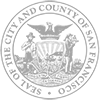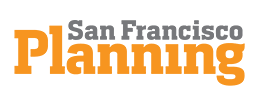HOME-SF produces below market rate rental and ownership housing units for several residents in San Francisco.
Background
What is HOME-SF?
HOME-SF is San Francisco’s local density bonus program. It is designed to incentivize building more affordable and family-friendly housing in neighborhood commercial and transit corridors throughout the city by offering form-based density, zoning modifications and priority processing. HOME-SF requires a higher amount of on-site affordable housing than the inclusionary housing ordinance (between 20-30 percent) and allows developers meeting all program requirements additional density and up to two additional stories of height. The program was one of the first in San Francisco to set aside a portion of affordable units for middle-income households (making up to 130 percent AMI).
All HOME-SF projects are reviewed and entitled by the Planning Department, pursuant to Sections 206 and 328 of the Planning Code. Affordable units created by the program (“HOME-SF Units”) are then subject to the same provisions as on-site affordable units provided through the City’s Inclusionary Housing Program (Section 415), except for the on-site rates and associated affordability levels as detailed below. HOME-SF Units are subject to the provisions of the Inclusionary Housing Procedures Manual.
Originally, HOME-SF consisted of one option, where developers would receive form-based density and two additional stories of height above the height limit in exchange for a strict 30 percent on-site requirement. In August 2018, the Board of Supervisors approved a trial program (until a triennial Technical Advisory Committee examines and re-sets the required rates) that introduced several tiered options.
Why is HOME-SF Important
HOME-SF, like the on-site Inclusionary Housing Program, does not require any public subsidy. Developers opt to participate in the program, providing the required level of on-site affordable units, and in exchange receive additional height, density and certain zoning modifications. An analysis of potentially developable soft sites in the program area by the Planning Department found that HOME-SF could produce up to 5,000 permanently affordable units in the next 20 years.
Key Trends
To date, 2601 Van Ness is the only HOME-SF project that has received entitlements, but none have yet been constructed.
The original 2601 Van Ness project: 27 units (0 percent affordable – project proposed to pay in lieu fee) was modified with HOME-SF to be 60 units (18 affordable units - 30 percent affordable).
Several projects have either expressed interest through Project Review meetings,
formally submitted a Preliminary Project Assessment (PPA) or re-submitted a previously submitted project to take advantage of the program.
What’s Happening to Enhance HOME-SF?
The Planning Department staff continues to look for potential tweaks that can be made to the program to ensure it produces the maximum amount of permanently affordable units. Potential changes could include further streamlining the HOME-SF process, removing some of the strict eligibility criteria, and adjusting the required on-site inclusionary rate to maximize feasibility of providing on-site affordable units.
Issues with Implementing HOME-SF
HOME-SF includes several strict eligibility criteria, which greatly limit the number and location of potential HOME-SF projects. For example, HOME-SF projects must consist of new construction, may not demolish an existing residential unit, and cannot cause a significant impact to a historic resource, among other limitations. As a result, there have been several examples where projects have chosen to develop under existing zoning (with lower inclusionary requirements and fewer affordable units) or have pursued more complicated rezoning, rather than utilizing the HOME-SF program.
By design, the HOME-SF program only applies in zoning districts which regulate density by a ratio of units to lot area. This excludes many districts in Area Plans, which control density through height and bulk limits and unit mix requirements. The city’s lowest density districts, RH-1 and RH-2 (which allow one or two units on a lot, respectively, and cover over 70 percent of the city’s land area), are also not within the HOME-SF program area. Furthermore, areas such as the North of Market Residential SUD and a large part of the Northeast portion of the city, are either ineligible for the program or have very limited applicability.
When first introduced, HOME-SF consisted of only one option, requiring 30 percent on-site affordable units. While several projects did apply, the Department received feedback that the high on-site requirement made projects infeasible on many sites. In response, a trial program was developed, which allowed a varying percentage of on-site affordable units required based on the amount of extra height requested under the program.
One of the key tenets of HOME-SF is that the percentage of on-site inclusionary units required in order to qualify for the program will always be higher than the standard inclusionary requirement under base zoning. When the program was originally passed, the standard inclusionary rate was 12 percent, while HOME-SF’s was 30 percent. The city’s standard inclusionary rate has since been raised to at least 19 percent (13 percent for small projects), leaving a smaller gap between the standard rate and HOME-SF’s. As the standard inclusionary rate increases yearly, there will be less and less room for HOME-SF’s rate to be adjusted downward to respond to existing economic and development conditions.
For Future Consideration
The ideas for future consideration that have the potential to increase community stability in San Francisco are described below. They provide a starting point for agencies, decision-makers, and community members to explore stabilization efforts and identify critical pathways forward. Based on preliminary information, staff is qualifying these ideas according to the type of task, scale of resources and level of complexity to underscore that any of these ideas would require time and additional resources not currently identified. These are not City commitments or recommendations, rather informed ideas that will require careful vetting and analysis as to their reach, resource needs, feasibility, unintended consequences, legal implications, and racial and social equity considerations.
Program with permanent tiered structure and maximized applicability
The trial tiered HOME-SF program has already produced results and clearly demonstrated an increase in the program’s flexibility resulting in several projects choosing to develop under HOME-SF rather than existing zoning or the State Density Bonus program. It could be made permanent, with only the specific inclusionary rates re-set along with the inclusionary rate every three years per the TACs recommendation. As economic conditions evolve, and additional potential HOME-SF projects come through the Department for review, staff could continue to look for potential tweaks that can be made to the program to ensure it produces the maximum amount of permanently affordable units. Potential changes could include further streamlining the HOME-SF process, removing some of the strict eligibility criteria, and adjusting the required on-site inclusionary rate to maximize feasibility of providing on-site affordable units.
| Type of Response | Mitigation |
|---|---|
| Type of Task | Data, Regulation
|
| Resource | Generally only staff time would be required
|
| Complexity | Medium – generally some legislation and/or some change of and existing program, and two to three agencies involved
|
| Timing | Long Term (more than 5 years)
|
| Geographic Scale | Citywide |
| Partners | Planning Department, Inclusionary Inclusionary Technical Advisory Committee (TAC), private developers, Board of Supervisors |
| Key Priority | Yes - Potential City Programs and Policies |
| Benefit | Increasing the program’s flexibility could potentially result in an increase of affordable housing production. |
| Challenge | This would require more resources to frequently track and assess changes to the program. |
Possibilities for increased density and affordability
In RH-1 and RH-2 districts, density limits are too restrictive to produce inclusionary housing, and where HOME-SF and other density bonus programs generally do not apply. However, several recently proposed state laws seek to alter restrictive single and two-family zoning throughout the state, allowing such zoning districts to potentially produce affordable housing. The highest profile bill is Senate Bill 50 (SB 50) which, if passed, would release density limits near high-quality bus and transit stops, and in ‘jobs-rich’ areas with high access to opportunity. By virtue of San Francisco’s relatively frequent transit service, large portions of the city’s RH-1 and RH-2 districts would be subject to SB 50’s proposed requirements. If passed, SB 50 would essentially extend HOME-SF’s density de-control to RH-1 and RH-2 districts, allowing projects in those districts that would trigger San Francisco’s inclusionary housing ordinance and produce affordable units.
| Type of Response | Early Intervention |
|---|---|
| Type of Task | Regulation, Policy Implementation
|
| Resource | Generally only staff time would be required
|
| Complexity | Medium – generally some legislation and/or some change of and existing program, and two to three agencies involved
|
| Timing | Long Term (more than 5 years)
|
| Geographic Scale | Citywide |
| Partners | Board of Supervisors, neighborhood groups |
| Key Priority | Yes - Potential City Programs and Policies |
| Benefit | Increasing the types of areas that the program could be applied may result in an increase of affordable housing production. |
| Challenge | This would require more resources, assessing whether legislation in the pipeline achieves the same benefits, and further analysis into whether these proposed changes will result in more affordable housing across the city. |
HOME-SF Web Site
Visit Site »FOOTNOTES:
1. The Program is governed by Planning Code Section 415 and the Inclusionary Housing Program Procedures Manual, and is administered by the Mayor's Office of Housing and Community Development (MOHCD) and the Planning Department.
2. On-site units produced by the inclusionary program must be rented to households making between 55% and 80% of Area Median Income (AMI) (for reference: a one-person household making up to $66,300, a two-person household making up to $75,750, or a four-person household making up to $94,700) or sold to households making between 80% and 130% of AMI (for reference: a one-person household making up to $107,750, a two-person household making up to $123,100, or a four-person household making up to $153,900).

